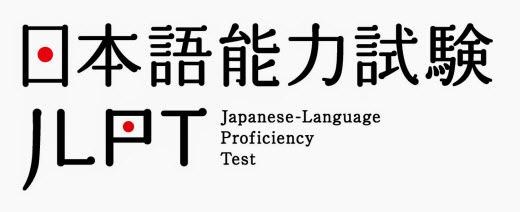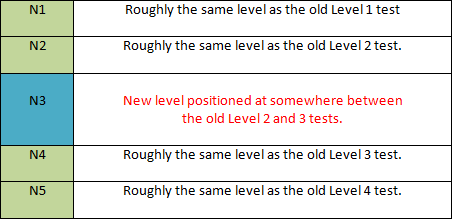- Home
- JLPT
JLPT -
Japanese Language Proficiency Test
JLPT (Japanese Language Proficiency Test), or 日本語能力試験 in Japanese, is used as a mean to evaluate the competency of Japanese for non-native speakers.
Most people who study Japanese will eventually want to sit for this test to check their language proficiency, myself included.

If you (as a foreigner) ever want to work in Japanese companies, a JLPT certificate offers you a preferential treatment at these companies as most of them acknowledge your Japanese language skills through your JLPT qualification.
Japanese Language Proficiency Test System
Formerly JLPT consists of 4 levels, level 1 to level 4, level 1 being the most difficult and level 4 being the easiest. However in 2010 the format has changed to include an additional level.
The new test now consists of 5 levels, N1 to N5, N1 being the most difficult and N5 being the easiest.
The newly added level is N3, which is a level somewhere between the old level 2 and level 3.
The other levels roughly remain the same. However N1 has some changes to measure slightly more advanced abilities.
See the following diagram for a clearer picture on the comparison of the old and new tests.

The scoring system has also been changed. Previously the total scores for the entire test was 400 but now it has now changed to 180 for total scores.
Despite all these changes, the test content still includes:
- Vocabulary (文字・語彙)
- Grammar (文法)
- Reading (読解)
- Listening (聴解)
You can look at some useful JLPT tips on all the 4 sections that I have compiled based on my personal experiences.
Linguistic Competence Required for Each JLPT Level
According to the JLPT official site, other than language knowledge like Vocabulary and Grammar, the followings are the linguistic competence required for each level.
N1 (Formerly JLPT1)
Able to understand Japanese used in a variety circumstances.
Reading: Can read writings on various topics with logical complexity and abstract writings such as newspaper editorials and understand the structures and contents. Can read and understand profound materials on various topics and understand the intent of the writers comprehensively.
Listening: Can comprehend oral materials such as coherent conversations, news reports, and lectures, spoken at natural speed in a broad variety of settings, and can follow their ideas and understand their contents comprehensively. Can understand the details such as people relationships, the logical structures, and the essential points.
N2 (Formerly JLPT2)
Able to understand Japanese used in everyday situations and a variety circumstances to a certain degree.
Reading: Can read writings on various topics such as articles and commentaries in newspapers and magazines and understand their contents. Can read and understand simple materials on general topics and understand the intent of the writers.
Listening: Can comprehend oral materials such as coherent conversations and news reports, spoken at nearly natural speed in everyday situations and various settings, and can follow their ideas and understand their contents. Can understand people relationships and the essential points.
N3 (in between former JLPT2 and JLPT3)
Able to understand Japanese used in everyday situations to a certain degree.
Reading: Can read and understand written materials on everyday topics with specific contents and can grasp summary information such as headlines of newspapers. Can read slightly difficult writings in everyday situations and understand the main points of content with some helps.
Listening: Can listen and understand coherent conversations in everyday situations, spoken at near-natural speed, and can follow their contents generally and grasp the people relationships.
N4 (Formerly JLPT3)
Able to understand basic Japanese.
Reading: Can read and understand passages on familiar topics written in basic vocabulary and kanji.
Listening: Can listen and understand conversations in daily life (if spoken slowly) and follow their contents generally.
N5 (Formerly JLPT4)
Able to understand some basic Japanese.
Reading: Can read and understand typical expressions and sentences written in hiragana, katakana and basic kanji.
Listening: Can listen and understand conversations about topics regularly encountered in daily life and classroom situations, and can pick up required information from slowly-spoken short conversations.
The above linguistic competence required for each level are based on the JLPT official site.
Buy me a coffee









Facebook Comments
Don’t see the comments box? Log in to your Facebook account, give Facebook consent, then return to this page and refresh it.